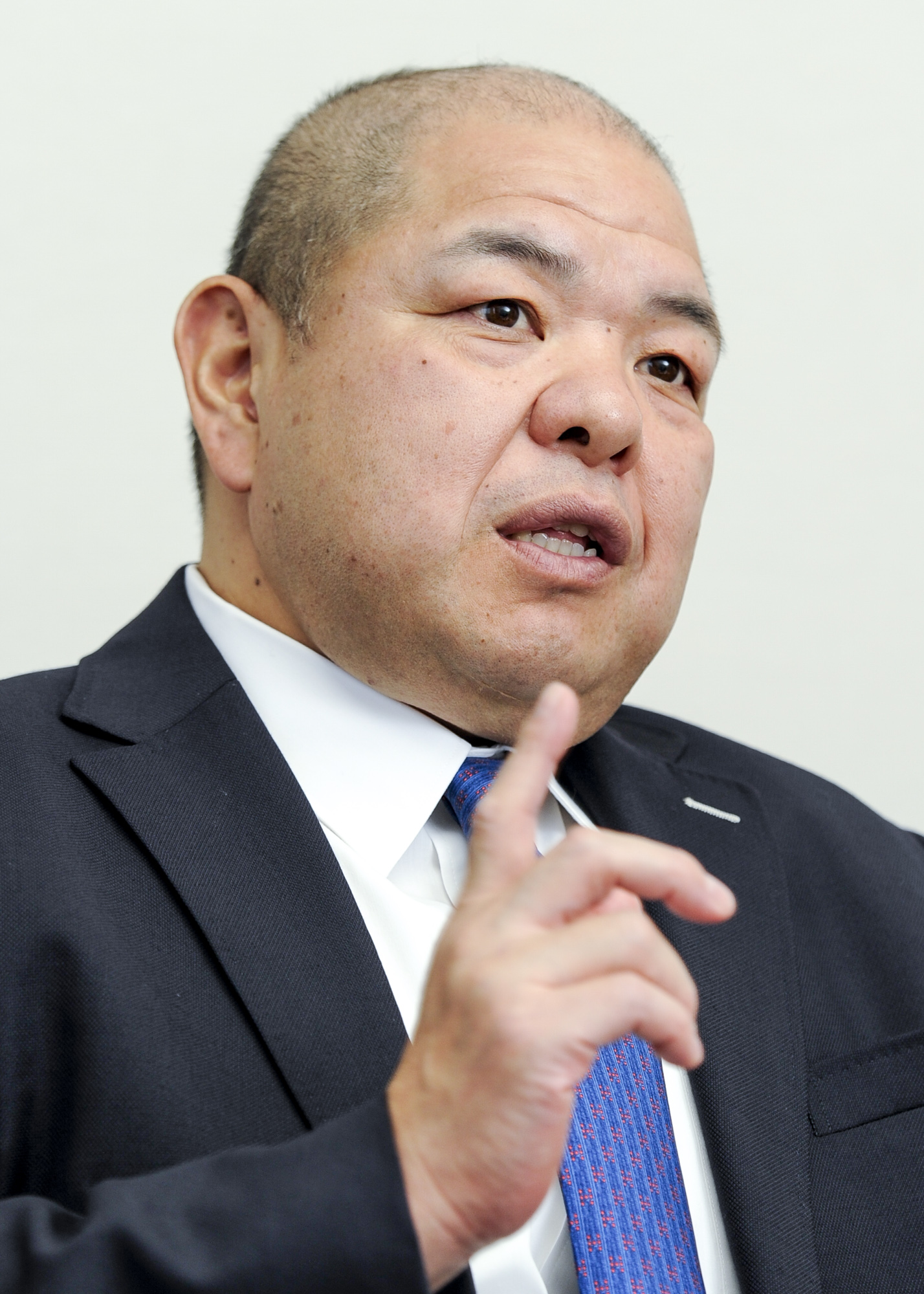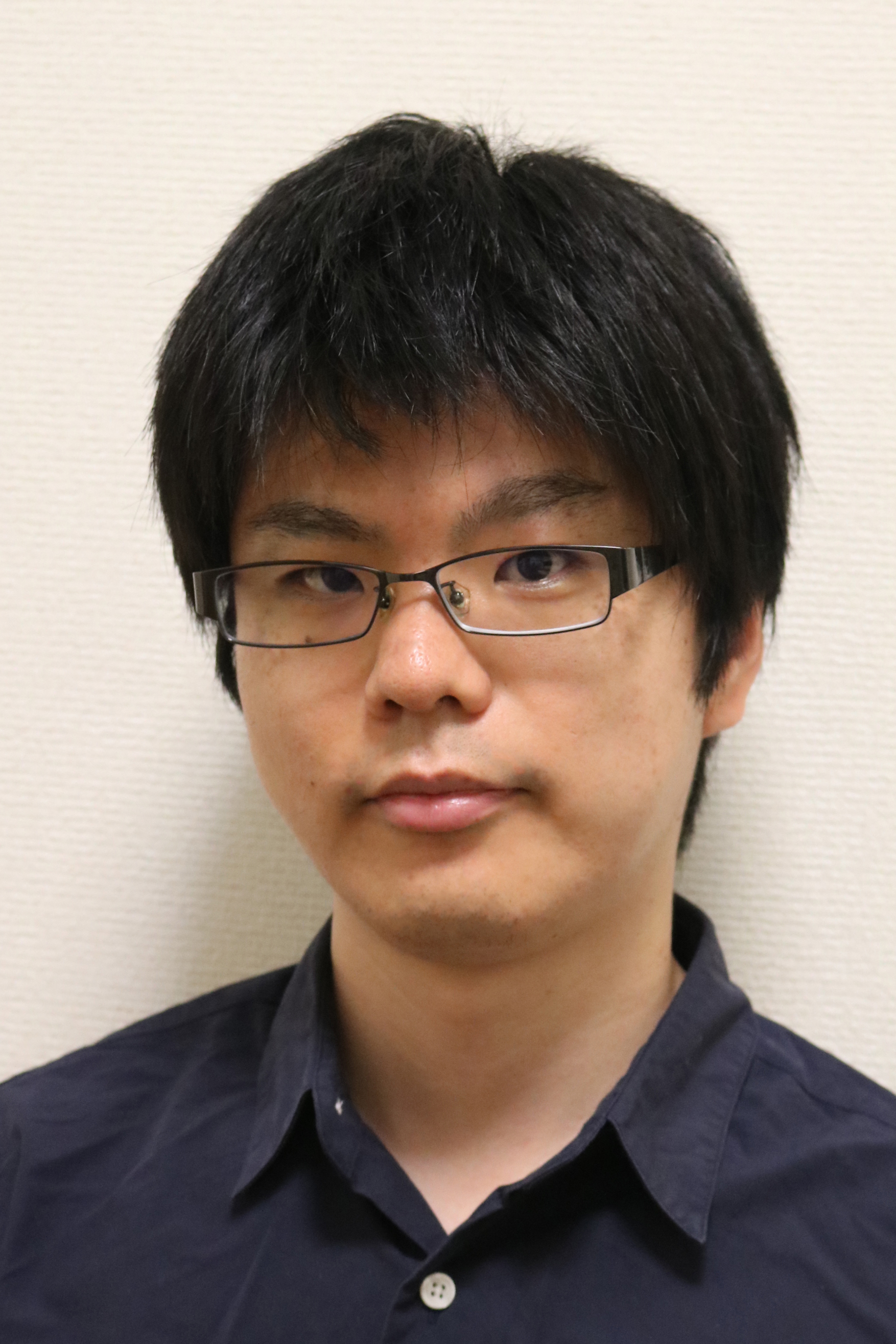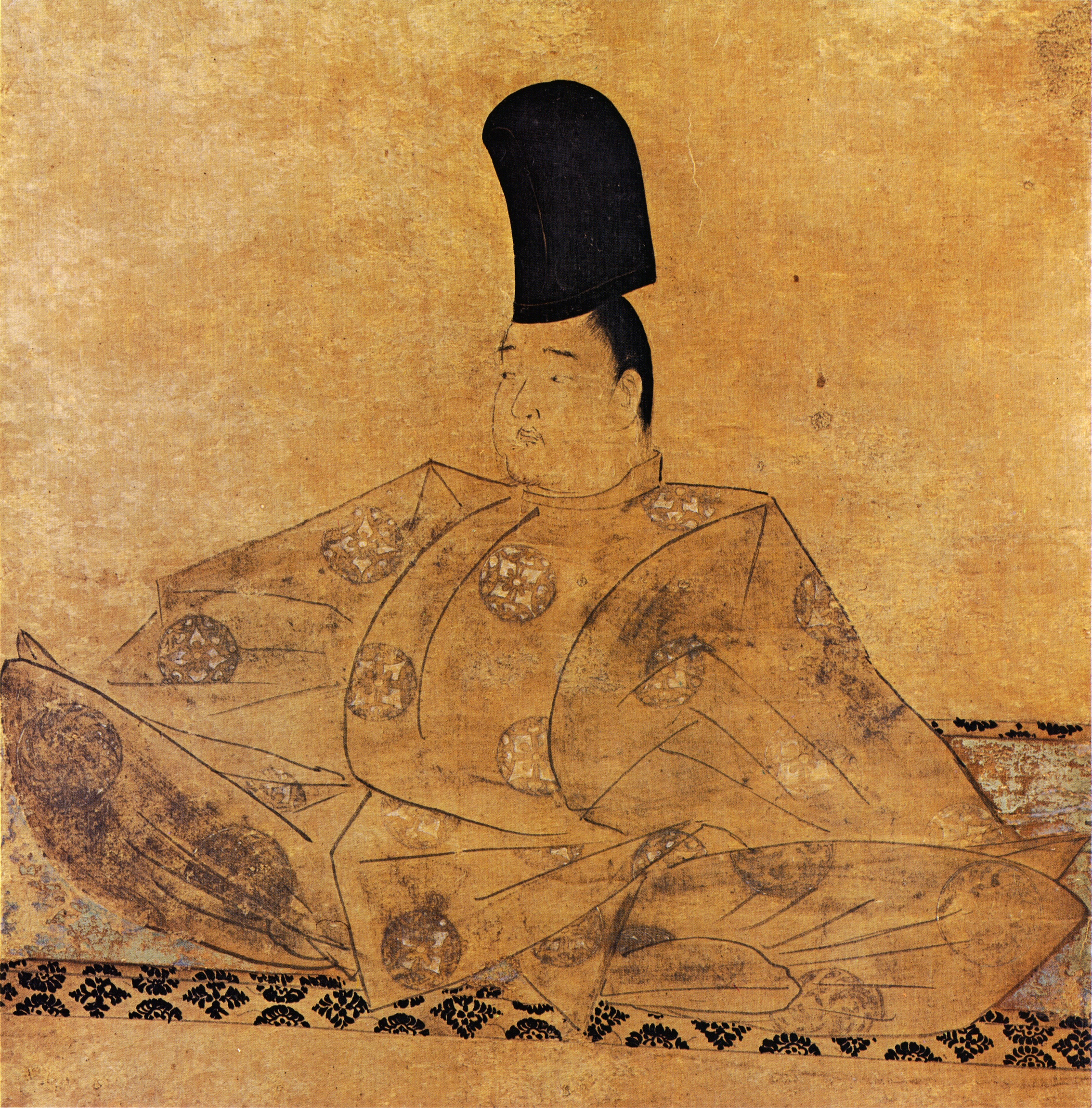A Fifteen-year-old’s Journey to Becoming a Three-Michelin-Star French Chef — My gratitude toward earlier chefs who built trust in Japanese people’s ability to do good work in France
Kobayashi Kei, Chef and Owner of Restaurant Kei
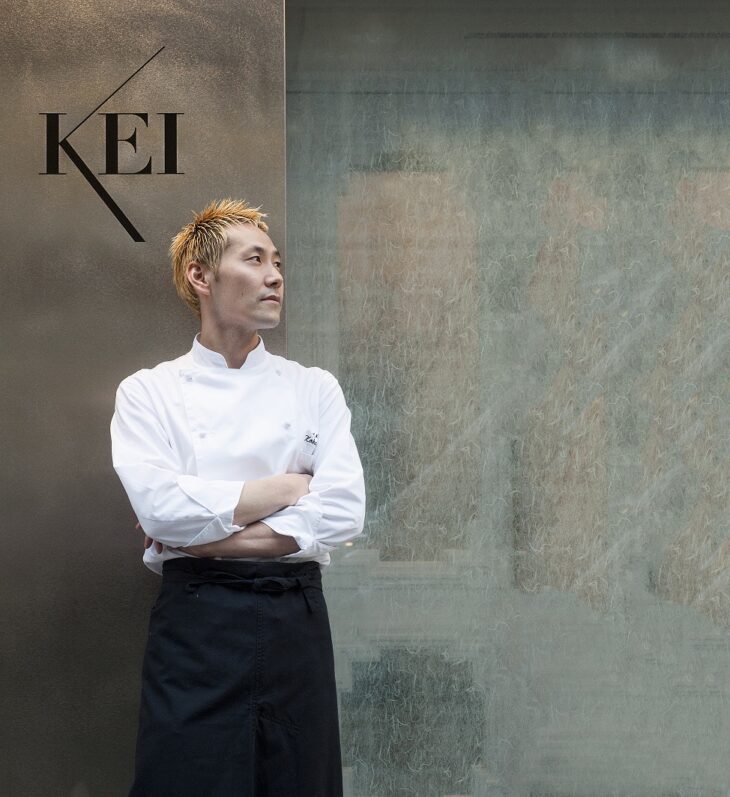
Kobayashi Kei, Chef and Owner of Restaurant Kei
© Thuriès Gastronomie MagazinePascal Lattes BD / Courtesy of Restaurant Kei
“I think that my parents first sparked my interest in cooking. My father worked as a Japanese chef and my mother as a Western one. Other families bought and ate ready-made meals but at our house my mother made everything from scratch. So, cooking was always close by.”
“With that around me I naturally became fond of cooking and from around the age of 10 I played at making food with my elder brother. Having said that, I didn’t plan to become a professional chef from an early age.”
So says Kobayashi Kei (42), the chef and owner of Restaurant Kei, a Paris eatery that won three stars in the MICHELIN Guide France 2020. The Michelin Guides are published in around thirty countries and use stars to rate restaurants. Kobayashi’s spectacular achievement was to become the first Japanese person to gain three stars in the most strictly judged of the guides, the edition published in France. The Michelin Guide commended him with these words: “He is a true master of taste. He pursues beauty with precision and care.”
Kobayashi was born in the city of Suwa, Nagano Prefecture. After training as a French chef in Nagano and Tokyo, in 1998 he traveled to France. He worked in various restaurants across the country, as a sous-chef to Alain Ducasse in Paris (the maestro of French cuisine), then in 2011 opened his own Restaurant Kei.
Watching a Three-Michelin-Star Chef on TV
It was when I was 15. I was watching a TV documentary about the three-Michelin-star chef Alain Chapel. His white jacket, black trousers and white apron looked so cool and instantly I was captivated. I want to become a chef too! I thought.
Having said that — and with apologies to people back home — I grew up in Nagano Prefecture so I hadn’t eaten proper French food. So, I jumped into this world without knowing anything.
I decided to act immediately. The first place I applied to was a Nagano members-only hotel called Tokyu Harvest Club Tateshina. The chef there was Nakamura Norihiro, who passed away a few years ago. A Francophile, he had experience working with French people and had taken part in cooking competitions in France. Basically, I was totally focused on learning. As soon as I entered the kitchen, they were teaching me things like “Who are the French?” and “What is French cuisine?” So much so, that after about a week I also wanted to go to France.
The main thing Nakamura impressed on me was the importance of learning the basics. He taught me things such as how to deal with people, how to behave towards my superiors, and a proper attitude towards cooking. It wasn’t just how to be a cook; more than that, it was how to be a human being. Between the ages of 15 and 19 I had enough scoldings to last a lifetime [laughs].
Chef Nakamura told me that there are lots of chefs in Japan who’ve studied in France. So he said he’d introduce me to a good chef in Tokyo and that I should go there first and prepare somewhere to start from when I eventually returned. He said I could go to France after that. He introduced me to the chef Shimizu Ikuo and I trained with him in Tokyo for just under two years.
Then in December 1998, aged 21, I came to France. That year, the winter was extremely cold: a record-breaking 10 or 15 degrees below zero.
My first plan had been to go to Brittany. French cuisine is a collection of different regional cooking traditions, so you can’t understand it without seeing the countryside.
But I suddenly hit a huge stumbling block. There’d been a miscommunication with the restaurant that I thought would employ me. I visited tens of other restaurants but none of them would give me a job. My money for living expenses ran out and I temporarily returned to Japan.
But I didn’t give up. I returned straight back to France one month later and started working at the restaurant L’Auberge du Vieux Puits in the southern region of Languedoc-Roussillon. It was a one-star (now three-star) restaurant run by chef Gilles Goujon and I was a kitchen manager.
Normally, training in French cuisine starts with fish then goes on to meat. But then I was told that “meat comes first in France.” Chef Shimizu had said “just cover the first steps for meat in Japan because you can learn meat basics such as butchering in France.” I became reasonably good at fish during my six years working in Japan and Chef Shimizu even told me, “I don’t think fish will be a problem,” and gave me his seal of approval. But when I got to France, the first restaurant told me to “do the fish.” Because of what I’d done in Japan, I refused and told them I was allergic to fish [laughs] so they let me do the meat.
“Once I get into a kitchen things will work out”
I came to France intending to train for at least ten years. But back then at the age of 21 I didn’t even understand the concept of a residence permit. I arrived assuming I could switch from tourist visa to work visa. So when my three-month tourist visa ran out I returned to Japan, got a student visa instead, then made use of the student system to start working.
I’d used some French in Japanese kitchens, but I’d only studied a little. In any case, whether it’s France or Japan, the artisan world of chefs is more about action than words. From the age of 15 to 19 I’d been scolded and told to “Look carefully at how people work!”
Meanwhile, I acquired some skill in observing people: the ability to sense “What does this person need now?” I could quickly produce things people above me needed and pass on my own cooking at the right time. That ability to support others is a skill that chefs have to perfect.
I was really stuck at first and had trouble when I couldn’t work. But even in a foreign country I always thought, “As long as I can just get into a kitchen, things will work out.”
For six years in Japan, 364 days a year, I worked in a kitchen and wielded a chef’s knife. Even on my days off I trained in other kitchens. In Tokyo, I had no TV and no radio. But there were many books and videos about France at Chef Shimizu’s house. I borrowed those and ate them up. In my first job, at Gilles Goujon’s restaurant, I worked intensely from 8 am to 2 am or even later. My life in Japan was the same.
Later I worked at Le Prieuré à Villeneuve-lès-Avignon in Provence, then Le Cerf à Marlenheim in Alsace, both Michelin-starred. In 2003, I started at the three-star Restaurant Alain Ducasse au Plaza Athénée in Paris.
After doing research as best as I could for three years, I found that everyone agreed that, “Chef Jean-François Piège’s Plaza Athénée is the one.” I also wanted to see for myself what kind of place a Michelin three-star restaurant is.
Working at a three-star restaurant
The first thing I learned from Piège was why a restaurant has so many staff.
There were 35 people in the kitchen (including washing area), 20 serving staff, and 5 or 6 administrative staff. Of about 60 staff, 45 dealt with customers. That’s why everything gets close to perfection. There aren’t many restaurants with so many staff anywhere in the world. The restaurants I’d worked at before had about 15 staff for 60 to 70 customers, so it was an invaluable experience.
Actually, the difference between a two-star and a three-star restaurant isn’t how good the food tastes; it’s the service and other details the restaurant provides. I’m often told things like, “The food at this restaurant tastes better than at a three-star one.” But if a good chef at a bistro or café uses good ingredients of course they’ll make delicious food.
The first year I joined the restaurant, Piège left for the Hôtel de Crillon. He invited me to go with him, but I stayed behind at Plaza Athénée to work as a sous-chef to the new chef, Christophe Moret (currently at the Shangri-La Hotel).
Moret’s way of doing things was 100% different to Piège’s but it was a huge thing for me to see both chefs up close.
Journalists say things like,” Even though it’s an Alain Ducasse restaurant, Ducasse isn’t in the kitchen.” But he kept a very close eye on things from the standpoint of a “supreme commander.” He often came to the kitchen and often sampled the food. Those times, both chefs gave it everything they had.
My personal history is the chefs who taught me. There is meaning to every step of my journey, and that’s why my food’s as it is and why I’m as I am. So I don’t have only one teacher. All the same, the time I spent working under Ducasse is wonderful and precious to me.
Ducasse’s philosophy is a highly coherent one. Above all, he values skill in finding good ingredients. If that was only finding good ingredients it wouldn’t be difficult. But the difficult thing is sourcing those good ingredients for the kitchen day in, day out. To do so, a relationship of trust with suppliers is essential. It depends on whether or not the suppliers think, “I really want them to use this.” Because of that, the usual important skills such as cutting methods, assaisonner (seasoning) and applying heat to cook, aren’t any use unless you have the ingredients.
And to communicate your own vision, you need not just food ingredients but other important “ingredients” such as cups and plates. It’s important to have a relationship with makers where you can tell them whether or not a plate suits you and ask them to make something based on your ideas.
And those cups, knives and plates can only be put out because there is someone to properly wash them and polish them every morning. The restaurant world only works with those things and people. Then, as a chef, you create excellent food in the kitchen, arrange it on plates and waiting staff present it to the diners.
It was from Ducasse that I learned the importance of that entire process. Other chefs had said the same thing but his attitude in that respect was 100%.
In particular, he made absolutely no compromise when it came to ingredients. He used the very best ingredients. Choosing ingredients was the work of the sous-chef, so that’s how I developed a careful eye.
A relationship of trust is needed when someone’s given work. Everyone else in the restaurant was French and as the sous-chef, there were about thirty cooks underneath me. For example, the chef might ask me what ingredients were available then ask me to make something for tomorrow using them. Then I’d need to make at least two dishes. I’d make the dishes for Chef Moret but they also had to be good enough for Ducasse. The thirty staff below me would be watching closely, so I couldn’t fail. In the unlikely event it went wrong, I’d have to show how to rescue the dish.
I was at Plaza Athénée for seven years in total and as sous-chef for four of those. I’m still making use of that today.
How I met Gérard Besson
Whether I was being employed or running my own restaurant, my ultimate goal was to become a chef. As a chef, it is important to reach the top and create your own territory. I looked for somewhere I could do that.
Ducasse told me that, “If you wait 18 months, I’ll set up a chef role at a Paris one-star restaurant,” but the global financial crisis happened just around then. If anyone changed job at a time like that that his salary would only decrease. So no roles opened up.
At that time someone introduced me to Gérard Besson. Yet, it wasn’t to talk about buying Besson’s restaurant. Besson showed me everything there was to do with owner-chef restaurants.
In any case, I never thought that I could buy something like this (today’s Restaurant Kei). Yet, Besson told me that if I wanted to run a gastronomie (a restaurant that, unlike bistros and other eateries, uses particularly advanced techniques to pursue fine cuisine) I could think about it. At first Besson asked me if I would be the chef in his restaurant’s kitchen while he was owner-chef. But I thought that if I was going to do this, I wanted to do it by myself; and I said no. After that we met and talked about twenty times and in the end, I bought this restaurant. And that was down to a meeting too. In fact, Ducasse and Besson both trained under Alain Chapel, the chef I’d seen and admired on TV.
Besson was a father-figure to me. If I had a problem he’d advise me straight away. He has also taught me his specialty dishes.
One was a Lyon dish called L’oreiller: a warm version of pâté wrapped in pie pastry. At Plaza Athénée I made it by different methods, but when I took those recipes apart to make a new dish both Besson and Ducasse came to try it. “You are using wild rabbit for the sauce, so you should change that to normal rabbit,” was the advice from Besson.
Originally, this was a two-star restaurant. I opened restaurant Kei in 2011 with the notion that I had to get two stars for Chef Besson, while any more would be for me and the staff. In 2012 I got one star, in 2017 two stars, and then in 2020 three stars.
What is an owner-chef?
It felt like a long time from one star to two stars. Every time someone else from the restaurant world came to eat and said, “You’ll get it this time!” our staff started to believe it too. On the other hand, when in fact we didn’t, motivation would suffer. In that situation staff aren’t working at their best or following me, so it was tough.
But one thing that helped was being booked out from the time we opened. That’s the best way to improve staff morale.
A present we have 20 staff: 12 in the kitchen and 8 serving. I want my staff to become “winners,” so I gradually make it more and more difficult for them. Ultimately, I want them to become better than me; because when that happens it gets easier for me too. But if they do get better than me, I’m confident I can go even further.
Besson told me that, “Becoming an owner-chef is the same as changing your job.” At first that didn’t click, but after a week I understood what it meant. Kitchens and restaurants always have problems. Looking after people (not just staff but customers too) takes up 80% of your energy.
Unlike a restaurant-employed chef, you’re in a position where you can only pay suppliers and staff because there are customers. You are very close to customers and have to deal with them more seriously.
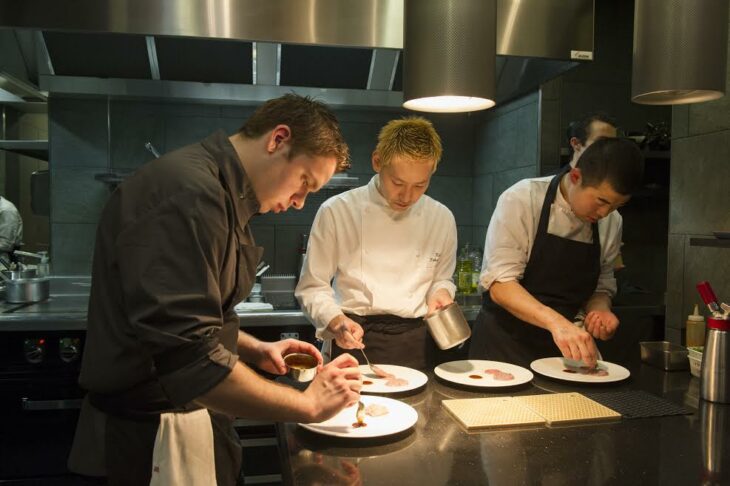
Chef Kobayashi in the kitchen with his staff
Courtesy of Restaurant Kei
Something memorable happened during my first year. We don’t accept large groups but one of our regular customers said he’d like to bring ten important people from Rungis (a market for food professionals). But the day before we got a call saying the number was down to five. I got angry and said that was outrageous but it turned out that our regular customer had died the day before. The person said, “He made the booking because he wanted to introduce the restaurant to us. So we wanted to come, even if only as five.”
I was lost for words. I became even more convinced of the need to completely focus when dealing with customers… as if that time I serve them might be the very last.
Staying in the customer’s memory
When we make something it isn’t just to satisfy customers’ appetites. When we make food it is in exchange for a life. For us to use 50 g of mince, a cow must die. A fish might have lived another year, ten years, twenty years.
Some chefs say the food “comes back to life” on the plate, but I don’t agree. In exchange for a life we make something, customers eat that, they are moved, and the food remains as a memory in their mind. I want food to live alongside a memory of emotion: of something delicious and a pleasant time. If that happens I can even tell the dead vegetables that, “I have communicated your essence to the customers.”
The three-star rating was given to me as chef, but our staff won them together. Some people criticize the Michelin evaluation method, but it’s important that staff see the results of their actions as measured by some standard.
Also, the Michelin rating is for one year and applies to the previous year. It is not this year’s rating. If I keep three Michelin stars until I quit or die, I can call myself a “three-star Michelin chef.” I can’t say that yet.
An endless battle
I call this a battle, but it’s not some athletics contest where you just need to run quickly. It’s a battle that never ends. There is no “correct” to cuisine. The Michelin ratings last one year and you don’t know judges might come.
So I tell my staff to look after all customers, whoever they are. It’s like ballet or opera; you perform the same way for everyone, whatever seat they are in.
People ask me what kind of chef I want to be. I reply that I want to be one to whom customers say, “This is the best restaurant with the best chef I’ve been to so far.” I want to be a chef who makes every one of his customers think that. When customers give praise, they come again with other customers. Because that happens, staff become more motivated. When they arrive in the morning the restaurant is booked out again, and the next day too. That makes their job worth doing.
Even though we won three stars this time nothing special has changed. It’s just that our booking system has had trouble. We’ve increased to three staff but we still can’t reply to all the emails. The phone is constantly ringing. The first week after our three-star rating, we got 1,500 calls and emails a day asking to make a reservation. We couldn’t keep up, no matter how hard we tried. So I’d like to take this opportunity to sincerely apologize to customers who have said they couldn’t get through on the phone or got a late reply.
The reason I could start my own restaurant in France and win three stars was because French chefs accepted Japanese people and taught them their techniques and philosophy. And that environment existed because earlier Japanese chefs built trust in Japanese people’s ability to do good work. That’s how my generation of chefs also became able to work in famous restaurants and be chosen as sous-chefs and top chefs.
Furthermore, as an individual chef, I’m also grateful to all those involved with French cuisine in Japan and all the people who love French food. Those people have made me who I am today.
In August we will renovate the restaurant, then reopen in September [2020]. I am aware of all the hopes of those involved in French cuisine and I intend to focus even more on both cuisine and each individual guest.
(As told to Shinozaki Yukari)
Translated from“15-sai no boku ga Furance mitsuboshi shefu ni narumade: Furansu de ‘Nihonjin wa higoto ga dekiru’ toiu shinrai wo kizukareta senpaigata ni kanshashitai (A Fifteen-year-old’s Journey to Becoming a Three-Michelin-Star French Chef — My gratitude toward earlier chefs who built trust in Japanese people’s ability to do good work in France),” Bungeishunju, April 2020, pp. 330–337. (Courtesy of Bungeishunju, Ltd.) [June 2020]
Note: Restaurant Kei has reopened in June 19, 2020.
Keywords
- Kobayashi Kei
- chef
- owner chef
- Restaurant Kei
- Michelin star
- Alain Chapel
- Alain Ducasse
- Nakamura Norihiro
- Shimizu Ikuo
- L’Auberge du Vieux Puits
- Gilles Goujon
- Le Prieuré à Villeneuve-lès-Avignon
- Le Cerf à Marlenheim
- Restaurant Alain Ducasse au Plaza Athénée
- Jean-François Piège
- Christophe Moret
- Gérard Besson
- Shinozaki Yukari

